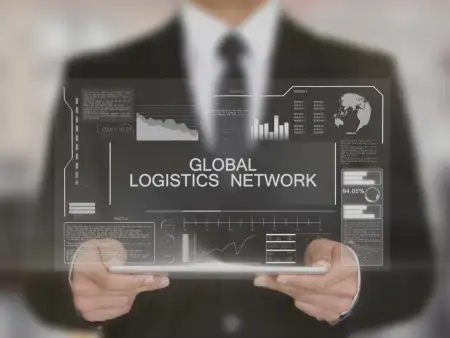As technology advances and the demand for fast, reliable delivery services continues to grow, logistics is transforming. From traditional methods of distribution and transportation to cutting-edge virtual solutions, the industry has come a long way in a short time. Let’s explore how far logistics have developed over the years and how innovation in both physical and digital spaces is creating opportunities for businesses to optimize their operations.
Comparison
In the past, logistics required a complex network of physical infrastructure and processes. From warehouses to transportation vehicles, goods had to be moved physically from one place to another in order for them to reach their destination. This was often expensive and time-consuming, making it difficult to scale operations quickly or adapt to sudden changes in demand.
Today, virtual logistics enable businesses of any size to leverage technology solutions for effective supply chain management. With the use of digital infrastructure such as cloud computing, companies are now able to coordinate movement of goods virtually across various locations with minimal cost and effort.
Virtual logistics also allow for greater scalability and agility due to its on-demand nature; enabling businesses to make quick adjustments to their supply chain operations.
Traditional Logistics
Traditional logistics refers to the transportation, warehousing, inventory management, and supply chain operations that are necessary for any business to effectively manage its goods. It is an industry that has existed since the beginning of commerce and continues to be essential in today’s global economy.
A potential drawback of traditional logistics is that it requires physical resources and personnel to move goods from one place to another, resulting in high labor costs and slower transport times. Additionally, the manual processes involved can be prone to errors and require constant monitoring for accuracy.
Virtual Logistics
Virtual logistics refers to a variety of online technologies and services designed to streamline the shipping, tracking, and delivery of goods across global markets. The digitization of supply chains has allowed businesses to track orders, shipments, and inventory in real-time. This has enabled them to reduce their costs and lead times, resulting in improved customer experiences.
Innovative solutions such as dropshipping, cloud-based platforms, and blockchain technology are also playing a key role in the growth of virtual logistics. One potential drawback, though, is the need for increased digital security measures, as cyberattacks can disrupt the flow of goods and services.
Integration
Businesses are increasingly turning to a hybrid approach by integrating traditional methods with virtual solutions. This integration has several advantages, including cost savings due to fewer resources needed as well as improved efficiency due to automated processes.
Additionally, by combining traditional and virtual solutions, companies can leverage the best of both worlds in order to create a more reliable and efficient supply chain.
Challenges and Solutions
As businesses explore new ways of conducting their supply chain activities, they must confront a variety of challenges that accompany this shift to virtual solutions.
These include infrastructure limitations, such as limited access to certain data or services; security concerns related to storing and transferring sensitive information; regulatory compliance with laws and regulations governing how goods are shipped; and customer expectations for quality service and fast delivery times.
To successfully navigate these challenges, businesses must develop a comprehensive logistics strategy that combines traditional methods with virtual solutions. This includes leveraging existing infrastructure to strengthen supply chain operations and investing in advanced technology to improve operational efficiency.
Companies should also establish policies for data security and regulatory compliance, as well as customer service standards to ensure customer satisfaction.
Trends and Innovations
In today’s world, there is an increased focus on automation, artificial intelligence (AI), data analytics, and other technologies that power Industry 4.0 logistics practices. Automation is playing a larger role in logistics than ever before. Automated warehouses allow for faster and more efficient picking of items for shipment or delivery.
On the transportation side, autonomous vehicles can travel large distances without drivers and can take multiple routes to avoid traffic congestion or obstacles. AI-driven route planning is also becoming more common, allowing for faster delivery times at lower costs.
Future Outlook
The future of logistics looks to be a combination of traditional methods and virtual solutions, as businesses strive to satisfy ever-evolving customer demands. We are already seeing the use of automation, drones, artificial intelligence (AI), and data-driven decision-making in the industry. These digital technologies are revolutionizing how goods are moved around the world.
We can expect more streamlined operations with greater efficiency, cost savings for customers, and improved customer service. As these advancements continue to take hold in the logistics space, it is likely that companies will be able to reduce lead times and increase customer satisfaction.
Practical Tips and Recommendations
The most important step in selecting the right approach for your business is understanding which fits best with your current operational setup and customer needs. For example, if you have a global operation, investing in an internet of things (IoT) solution to track and communicate with customers may be the best bet. On the other hand, if your business is mainly local or regional in scope, traditional methods such as trucking or rail transport may still make sense for you.
To assist businesses in making informed decisions when it comes to logistics optimization, The Logbook by Jansson, an independent agent of Landstar, provides up-to-date resources on new developments and best practices in transportation and logistics. This includes advice on how to choose the right transportation method, how to calculate optimal delivery times and costs, and more. This way, businesses can stay in the know and make sure they are using the most efficient logistics methods for their operations.




